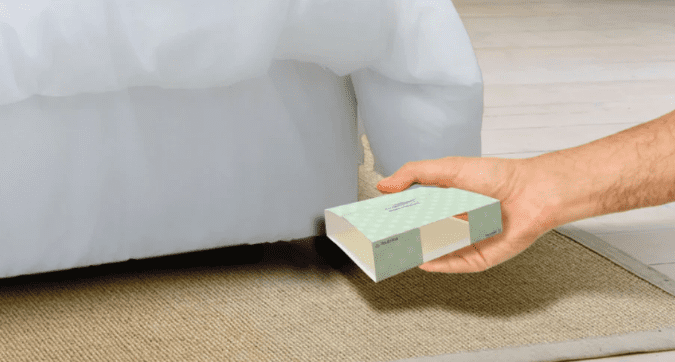Exploring Effective Bed Bug Egg Treatment:
Welcome to “Bed Bug Bite,” your trusted source for comprehensive information on tackling bed bug infestations. In the realm of pest control, bed bugs stand as formidable adversaries due to their resilience and ability to reproduce rapidly. Among the many questions that plague those dealing with these unwanted guests, one that frequently arises is, “Does bleach kill bed bug eggs?” In our quest to provide you with accurate and actionable insights, we delve into the science behind bleach. Its effectiveness against bed bug eggs, and the proper methods for its use. This blog post not only addresses this burning question but also equips you with the knowledge to combat bed bugs effectively, ensuring a bed bug-free environment. As we embark on this informative journey, rest assured that the information you find here is backed by the latest research and expert guidance.
Understanding Bed Bug Eggs
In the realm of bed bug infestations, understanding the role of bed bug eggs is paramount. These tiny, oval-shaped structures, measuring about 1mm in length, are the foundational elements of the bed bug life cycle. To comprehensively address bed bug infestations, it’s essential to grasp the significance of these eggs.
The Bed Bug Lifecycle:
Before delving into the specifics of bed bug eggs, let’s briefly outline the bed bug life cycle. Bed bugs go through a series of developmental stages, which include egg, nymph, and adult. Understanding these stages is crucial in devising effective treatment strategies.
The Importance of Bed Bug Eggs:
Bed bug eggs serve as the starting point of the infestation. A single female bed bug can lay hundreds of eggs in her lifetime, typically depositing them in secluded cracks and crevices near their feeding sources. This means that even if you successfully eliminate adult bed bugs. The presence of viable eggs can lead to a resurgence of the infestation if left unchecked.
The Resilience of Bed Bug Eggs:
What makes bed bug eggs particularly challenging to combat is their durability. These eggs possess a tough outer shell that protects them from many chemical treatments and environmental conditions. This resilience allows them to remain viable for extended periods, making their eradication a complex task.
As we navigate the complexities of bed bug eggs, our aim is to equip you with the knowledge needed to tackle these persistent pests comprehensively. By understanding their role in the infestation and the challenges they pose, you’ll be better prepared to make informed decisions in your battle against bed bugs.
The Science Behind Bleach
To address the burning question of whether bleach can effectively eliminate bed bug eggs, it’s essential to delve into the science behind this common household disinfectant. Understanding how bleach functions as a cleaning agent and its potential impact on bed bugs is a crucial step in assessing its efficacy in battling these pests.
What Is Bleach and How Does It Work?

Bleach, scientifically known as sodium hypochlorite, is a potent chemical solution commonly used for disinfection and cleaning purposes. Its ability to destroy pathogens and bacteria is well-documented, making it a go-to choice for sanitizing surfaces. When bleach comes into contact with organic matter, it releases chlorine gas, which effectively breaks down cellular structures and disrupts the functioning of microorganisms. This mechanism is key to its cleaning power.
The Active Ingredients in Bleach:
Chlorine bleach is the most widely recognized type of bleach, but there are variations that contain different active ingredients. It’s crucial to understand the variations and their suitability for combating bed bugs. Oxygen bleach, for instance, uses hydrogen peroxide as its active ingredient. Knowing which type of bleach to use can make a significant difference in your bed bug eradication efforts.
Chlorine Bleach vs. Oxygen Bleach:
In the context of bed bug eggs, it’s essential to differentiate between chlorine bleach and oxygen bleach. Each has its unique properties and applications. While chlorine bleach has a strong disinfecting effect due to its release of chlorine gas. Oxygen bleach, being less harsh, may be a preferable option for certain situations. We’ll explore the nuances of using each type in the context of bed bug egg treatment in greater detail.
As we delve deeper into the science of bleach and its chemical properties, we’ll uncover how these characteristics may or may not translate to effective bed bug egg elimination. By gaining insights into how bleach functions at a molecular level. You’ll be better equipped to make informed decisions about its usage in your battle against bed bugs.
Does Bleach Kill Bed Bug Eggs?
Now that we have a foundational understanding of bed bug eggs and the science behind bleach, we can delve into the critical question. Does bleach effectively eliminate bed bug eggs? To address this query comprehensively, we’ll explore scientific studies and real-world experiences to assess the true efficacy of bleach in eradicating these resilient pests at their earliest stage of life.
Scientific Studies and Experiments:
To evaluate the effectiveness of bleach on bed bug eggs, numerous scientific studies and experiments have been conducted. These investigations aim to determine whether bleach, with its disinfecting properties. Can penetrate the protective outer shell of bed bug eggs and disrupt their development. We’ll delve into the findings of these studies, providing you with evidence-based insights.
Real-World Experiences and Case Studies:
In addition to scientific research, real-world experiences and case studies offer valuable insights into the practical use of bleach in bed bug egg elimination. Many pest control professionals and homeowners have turned to bleach as a potential solution in their battle against bed bugs. By examining these real-life scenarios. We can gain a deeper understanding of how effective bleach truly is in addressing bed bug eggs.
The Limitations of Bleach Treatment:
While we explore the potential benefits of using bleach, it’s equally important to acknowledge its limitations. Bed bug eggs are notoriously difficult to eradicate due to their protective shell and hidden locations. We’ll discuss scenarios where bleach may not provide a comprehensive solution and why a multifaceted approach to bed bug control is often necessary.
Through a balanced examination of scientific research and practical experiences, we aim to provide you with a clear and informed perspective on the role of bleach in bed bug egg treatment. By the end of this section. You’ll be equipped with the knowledge needed to make informed decisions regarding the use of bleach in your battle against bed bugs.
The Proper Use of Bleach
Understanding whether bleach can effectively eliminate bed bug eggs is crucial. Equally important is knowing how to use bleach correctly to achieve the desired results. In this section, we provide step-by-step instructions on the safe and effective application of bleach in your battle against bed bug eggs. Proper usage ensures not only the best chances of success but also your safety and that of your environment.
Step-by-Step Instructions:
To begin, we’ll walk you through a detailed set of instructions outlining the proper steps to take when using bleach as part of your bed bug egg treatment strategy. These instructions will cover everything from preparation to application and safety measures. Following these steps diligently is essential to maximize the potential of bleach in eliminating bed bug eggs.
Safety Precautions and Ventilation:
Bleach is a potent chemical, and its use requires careful handling and safety precautions. We’ll delve into the necessary safety measures you should take when working with bleach. Including the use of personal protective equipment (PPE) and ensuring proper ventilation in the treated area. Safety should always be a top priority when using any chemical substance.
Concentration and Tools:
The concentration of bleach and the tools you use can significantly impact its effectiveness in bed bug egg treatment. We’ll provide guidance on selecting the appropriate concentration of bleach for your specific needs and discuss the essential tools that can aid in its application. Ensuring that you have the right resources at your disposal is key to achieving desired results.
By the end of this section, you’ll have a comprehensive understanding of how to use bleach effectively and safely in your battle against bed bug eggs. Following these guidelines ensures that you are harnessing the potential of bleach as a tool in your arsenal against these persistent pests while minimizing any risks associated with its use.
Alternative Bed Bug Egg Treatment Methods
While bleach can be a valuable tool in your battle against bed bug eggs. It’s essential to explore alternative treatment methods to ensure a comprehensive approach to bed bug elimination. In this section, we will discuss various alternatives to using bleach. Highlighting their pros and cons, so you can make an informed decision about the most suitable strategy for your specific situation.
Heat Treatment:
One highly effective alternative to bleach for tackling bed bug eggs is heat treatment. This method involves raising the temperature in the infested area to levels that are lethal to bed bugs and their eggs. We will explore the advantages of heat treatment. Such as its ability to penetrate hidden crevices, as well as its limitations and the equipment required.
Insect Growth Regulators (IGRs):
Insect growth regulators are chemical compounds designed to disrupt the development of bed bugs. Preventing them from reaching maturity and reproducing. We will delve into the mechanism of IGRs, their effectiveness in addressing bed bug eggs. The considerations when using these products.
Natural Remedies and Essential Oils:
For those seeking non-chemical alternatives, natural remedies and essential oils offer potential solutions. These substances, such as diatomaceous earth and certain essential oils. Are believed to have repellent or lethal effects on bed bugs. We will discuss the efficacy of these natural remedies, their application methods, and their limitations.
Professional Pest Control Services:
Engaging the services of professional pest control experts is often a prudent choice when dealing with a severe bed bug infestation. Pest control professionals have access to a range of specialized treatments and equipment, including heat treatments and powerful insecticides. We will outline the advantages of seeking professional assistance and the factors to consider when hiring a pest control company.

By exploring these alternative bed bug egg treatment methods. You’ll be equipped with a broader perspective on how to combat bed bug infestations comprehensively. Each method has its own set of advantages and limitations. And the choice of which to use may depend on factors such as the extent of the infestation and personal preferences. Ultimately, a multifaceted approach that may include alternative methods alongside bleach can provide a more robust solution to your bed bug problem.
Preventing Future Bed Bug Infestations
In our journey to combat bed bugs comprehensively. It’s essential to not only focus on eliminating existing infestations but also on preventing future outbreaks. In this section, we will provide you with a set of proactive strategies and preventive measures to ensure that your environment remains bed bug-free.
Regular Inspections and Early Detection:
One of the most effective ways to prevent bed bug infestations from taking hold is through regular inspections. We will guide you on how to conduct thorough inspections in your home or business, emphasizing the importance of early detection. Identifying bed bug activity at its early stages allows for swift action.
Bed Bug-Proofing Your Environment:
Taking steps to “bed bug-proof” your environment can significantly reduce the risk of infestations. We will provide practical tips on minimizing potential hiding spots for bed bugs. Such as sealing cracks and crevices, using mattress encasements, and decluttering areas where bed bugs can lurk.
Traveling Smart:
Bed bugs are notorious hitchhikers, often finding their way into homes through luggage and clothing. We’ll offer guidance on how to minimize the risk of bringing bed bugs back from your travels, including tips for inspecting hotel rooms and safely handling your belongings.
Education and Awareness:
Being informed about bed bugs and their habits is a powerful tool in prevention. We will emphasize the importance of educating yourself and your family or colleagues about bed bug prevention measures, so everyone can play a role in keeping your environment bed bug-free.
Professional Pest Control Maintenance:
Even after successfully eliminating a bed bug infestation, it’s wise to invest in ongoing professional pest control maintenance. Regular inspections and preventive treatments by experienced pest control experts can provide long-term assurance against bed bug reinfestations.
By implementing these preventive measures and incorporating them into your daily routine, you can significantly reduce the risk of future bed bug infestations. Prevention is a proactive and essential aspect of bed bug management, ensuring that your environment remains a haven free from these persistent pests.
Conclusion
In our exploration of the effectiveness of bleach in eradicating bed bug eggs and the broader context of bed bug management, we have uncovered essential insights to help you in your battle against these persistent pests. It’s clear that bleach, with its disinfecting properties, can be a valuable component of your bed bug treatment strategy. However, it’s equally important to recognize its limitations and explore alternative methods to ensure comprehensive bed bug elimination.
Empowered Decision-Making:
Armed with the knowledge gained from this comprehensive guide, you are now better equipped to make informed decisions when dealing with bed bug infestations. Whether you choose to use bleach, explore alternative methods, or seek professional assistance, your choices can be grounded in a deeper understanding of bed bug biology and treatment options.
Continued Vigilance and Prevention:
Remember that preventing future bed bug infestations is just as crucial as addressing existing ones. By implementing regular inspections, bed bug-proofing your environment, and staying informed about bed bug prevention measures, you can safeguard your home or business against potential reinfestations.
Additional Resources:
To further assist you on your journey to combat bed bugs, we have provided external links to reputable sources that offer additional insights and guidance on bed bug management. These resources can serve as valuable references as you continue your quest for a bed bug-free environment.
As the lead writer for “Bed Bug Bite,” it is our mission to provide you with authoritative and actionable information to tackle bed bug infestations effectively. We hope that this guide has been a valuable resource in your fight against these resilient pests. For any questions, comments, or further assistance, please feel free to reach out to us. Together, we can create environments that are free from the nuisance of bed bugs, ensuring comfort and peace of mind.




